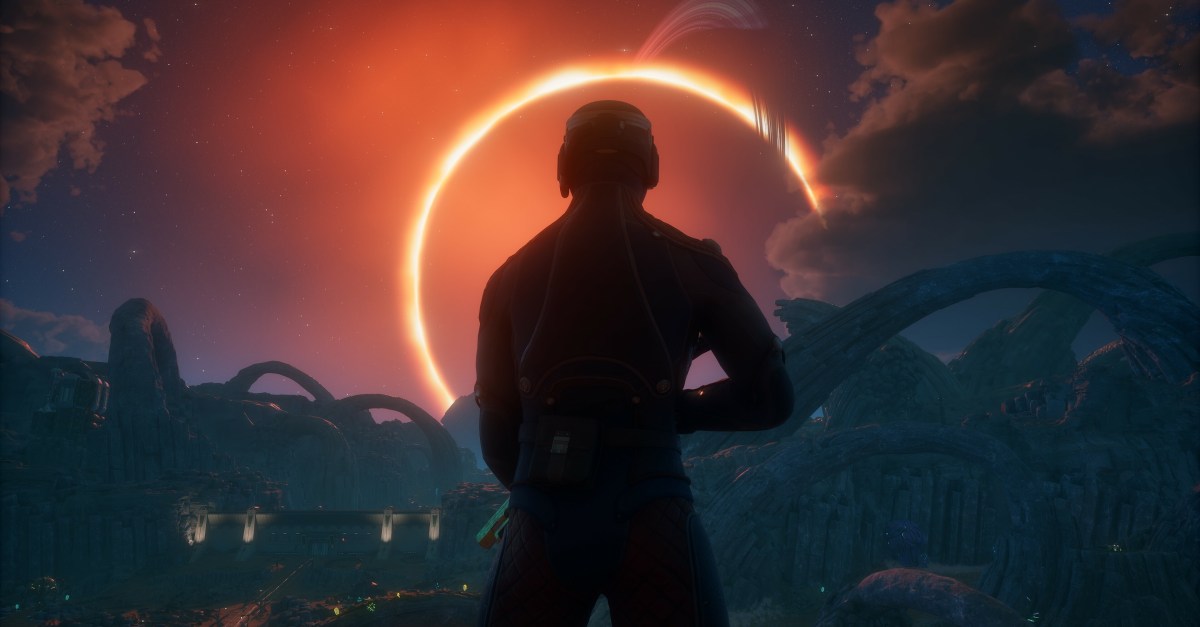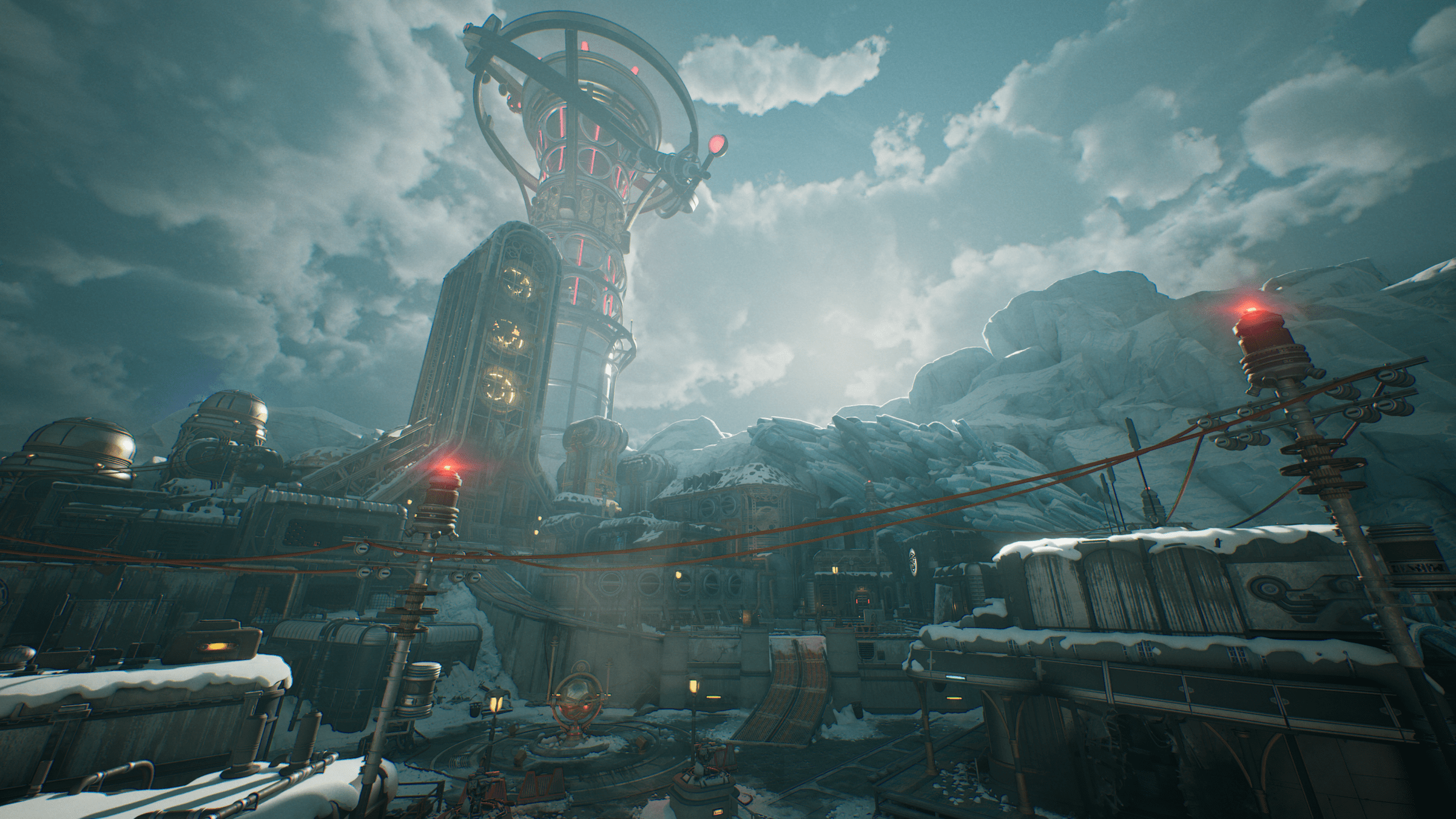Almost immediately in The Outer Worlds 2, the player receives news of a corporate shake-up: Auntie Cleo and Spacer’s Choice, two of the in-game retail brands, have merged to form Auntie’s Choice. Less a chain of stores and more a feudal power, Auntie’s Choice manages its employees — serfs, really — with the cruelty of the balance sheet, its military business far more important than the faux-cheery public-facing purveyor of somewhat-useful crap customers can’t get from anyone else.
The fictional business news parallels real-world business news. Right before developer Obsidian Entertainment began work on The Outer Worlds 2 in 2019, the studio was acquired as part of Microsoft’s game developer shopping spree. Less than a decade later, Microsoft’s gaming division doesn’t seem to be flourishing despite its incredibly deep bench of talent; in 2025, the company’s games efforts have largely been characterized by price hikes, layoffs, lopsided priorities, and an all-consuming interest from the company’s top brass in becoming an AI company.
Yet Obsidian is still here, and it has something to say about this stuff. At least, its new role-playing game, which casts players as an agent in a cheerily fascist organization that becomes embroiled in a conflict between a megacorporation and a totalitarian government, might have a few things to say about it. The studio itself? It’s a little less clear.
The Outer Worlds 2 creative director Leonard Boyarsky and game director Brandon Adler are not in the business of making games that respond to any specific moment — games take so long to make, after all, and fun is their fixation. They do acknowledge that their game’s scenario can feel quite topical. “Tim [Cain, co-creator of the Outer Worlds franchise] and I have always made games that are about what happens when people get power,” Boyarsky told me in a Zoom interview alongside Adler. “We’re expanding on that continually.”
Boyarsky and Cain (who announced his “semi-retirement” in 2023 but still does contract work for Obsidian) are co-creators of the Fallout franchise and have deep roots in the computer RPG scene, having worked on a string of cult classics like Vampire: The Masquerade – Bloodlines and the little-played but deeply beloved Arcanum: Of Steamworks and Magick Obscura. Their influence is everywhere, establishing modern RPG trends where factional conflicts and institutional mistrust are leveraged to generate interesting problems for players to solve.
The Outer Worlds games are best understood as another run at Fallout. Both franchises use a divergence in American history to spin out bizarre far futures defined by lopsided institutions. Fallout imagines a nuclear golden age post-World War II, where the science fiction of the ’50s became science fact, before a 21st-century thermonuclear war turns the world into Mad Max-style wasteland in which players eke out a mean, odd existence. In The Outer Worlds’ fictional history, President William McKinley is never assassinated, an antitrust movement never materializes, and the robber barons of the early 20th century run rampant for hundreds of years. Hence the heavy layer of corporate satire, which Obsidian expands in Outer Worlds 2 to become something darker.
In the first 15 minutes of the game, players are hit with:
- a glib conversation with a mascot for one of those retail companies owned by a defense contractor;
- a TV show clip that suggests a level of Starship Troopers-esque propaganda;
- an overt Starship Troopers-esque propaganda ad encouraging citizens to rat on each other.
There’s a meaner undercurrent to the sequel’s iteration on The Outer Worlds’ corporate humor, one that tugs at a thread linking corporate overreach to fascism’s rise. At least, I think there is. Maybe Obsidian thinks so too?
“We don’t talk about the fascist aspect of it, but we all end up in situations where we don’t have control. Even people in power, whether it’s the real world or these games, I think people in power are as much victims of the system as anybody else,” Boyarsky said. “They think they’re in control of these things, but no one person can actually wield as much power as people want. Because you’re grown up in the system, you react based on how you were raised in the system, your beliefs that have come up through being told what’s right and wrong by your parents or society in general. So we all find ourselves in situations where it’s just like: I have no idea how I got here. I guess I gotta make the best of it.”
I tell Boyarsky that sounds like a very video game-y view of the world, and ask why he thinks games are an ideal medium to tackle these quandaries. He tells me that, at least when it comes to The Outer Worlds, the themes came from a convergence of his and Cain’s interests. Cain, he says, loved the idea of a Futurama-inspired setting, leaning into the silliness. Boyarsky says he wants this game to keep that, but push toward something more difficult and less goofy.
“My thing was always — and this is something that we really continue to dig into — we all tell ourselves stories,” Boyarsky said. “That’s how we cope with the world, with reality. That’s built by how you’re raised and what people tell you when you’re younger. But when people co-opt that story, they can control you very easily.”
These are all potent ideas, but they’re also thick with irony thanks to events largely out of Obsidian’s control. Some of them involve geopolitical issues well outside the games industry. But others lie closer to home for developers that are now owned by Microsoft.
“All I can say is that the irony was not lost on us when we were in the middle of making the first game. Railing against corporate power and all this stuff — and we were bought by Microsoft!” Boyarsky says. “But we’ve only had support from them. They liked what we were doing with the first Outer Worlds, and they support us making this game. We’ve had absolutely no pushback or messages from on high telling us don’t do this, or make sure you do this.”
While it may be true that Microsoft has not interfered with Obsidian’s creative processes on The Outer Worlds 2, the company certainly had preferences on how the leads at the studio discussed it. The game, with Boyarsky’s interests in exploring the plight of what happens to those who aren’t in power when people with base interests come into power, seemed particularly relevant to Microsoft’s business entanglements with the Israeli Ministry of Defense.
Before we get further, a Microsoft rep interrupts to note that the company’s latest statements on the matter can be found online, and that they wanted to keep the conversation with Obsidian “focused on the game.”
So let’s focus on the game: Early on you can accept a quest that, depending on your choices, might send you to retrieve something from the Ministry of Accuracy. Like the name suggests, it’s a propaganda outfit. Read through the terminals found there and you’ll see how it works: Reports from all over the region are funneled through the Ministry, where workers “sanitize” them to make sure they align with the messaging of the space colony’s ruling power, The Protectorate. Art imitating life for Obsidian, once again. Or maybe it’s the other way around.
The Outer Worlds 2 is out now on the PS5, Xbox, and PC.
First Appeared on
Source link














